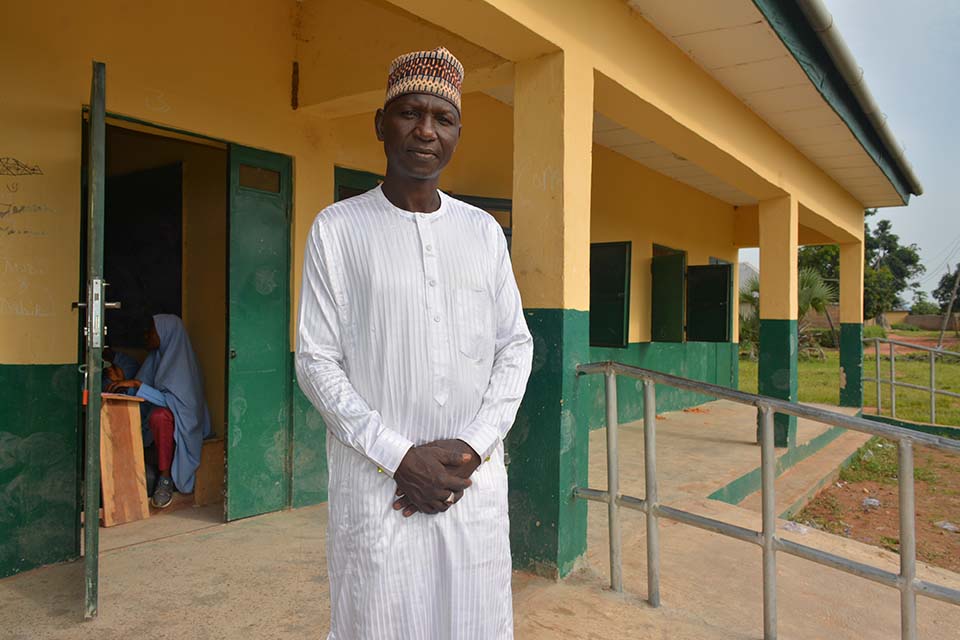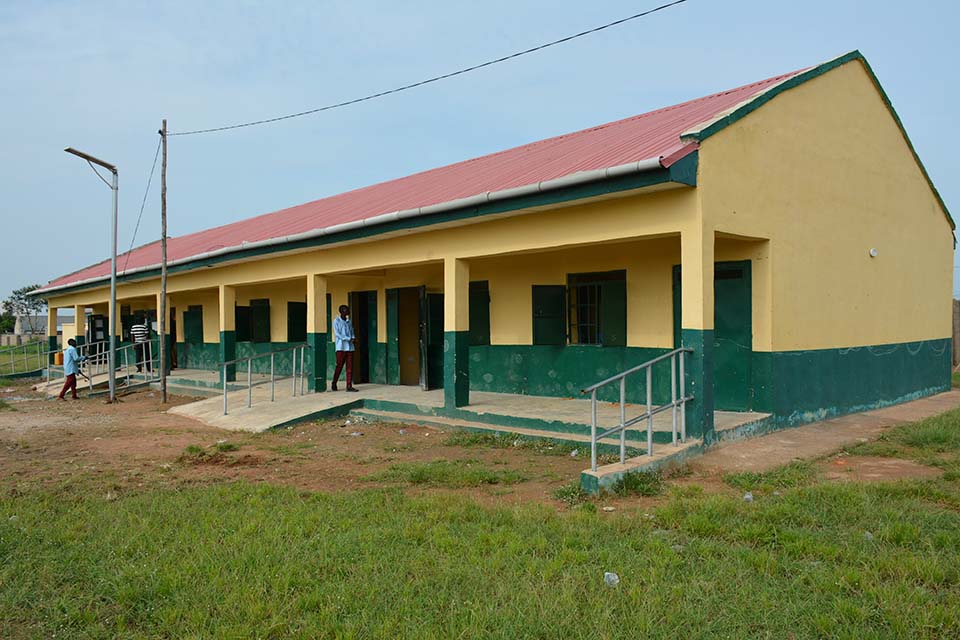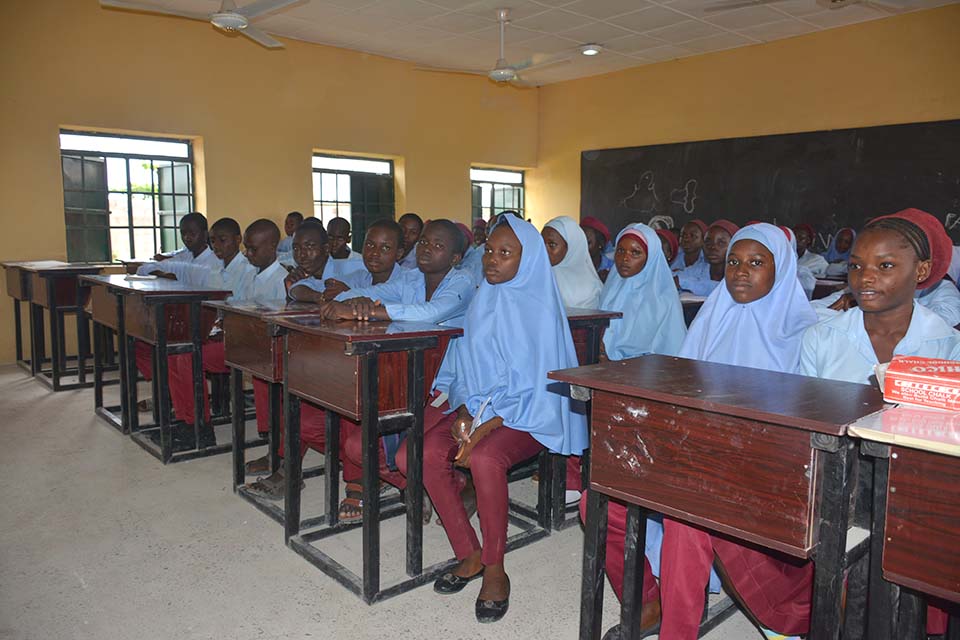
New Classrooms for Students in Nigeria
For Salisu Mohammed, the principal of Yolde Pate Government Secondary School in northeastern Nigeria’s Adamawa State, education is a fundamental human right for every child. But it’s a luxury for many children in Yolde Pate.

Salisu Mohammed, principal of the Yolde Pate Government Secondary School, stands in front the renovated classrooms constructed as part of the STaR project.
Photo by Grace Yakubu/CRS
The community is home to many families surviving on small-scale farming and trade. But recently there has been an influx of people from neighboring communities displaced by ongoing conflict in the region. This has caused a strain on resources that leaves little leftover to devote to education. While there are several government-run primary schools in Adamawa State, there are few secondary schools, particularly in remote communities. Children often have to walk long distances each day—a deterrent to attending class. Despite government efforts to build more schools, some buildings have never been completed. Such was the case for the Yolde Pate Government Secondary School.
For a long time, primary and secondary school students had to share a single small learning space. All classes originally began in the morning but because of overcrowding the secondary students were moved to afternoon classes.
“We [would] usually wait until after the primary school session is done before starting our lessons in the afternoon,” Salisu says. This caused scheduling problems. “We hardly used to finish our lessons for the term,” he says.

A new block of classrooms constructed by the STaR project at the Yolde Pate Government Secondary School, Adamawa State.
Photo by Grace Yakubu/CRS
In 2019, the CRS team working on the Stabilization and Reconciliation in the Lake Chad Region (STaR) Project conducted a community assessment in Yolde Pate. During this assessment, they learned about the challenges faced by the local school. After engaging in discussions with community leaders and the school administration, a decision was made to include the school in the community infrastructure rehabilitation plans. Notably, community stakeholders specifically requested that the new secondary school classrooms be relocated to a permanent site.
In addition to the new classroom, the project also renovated a previously abandoned classroom, constructed a three-stall sanitation toilet for the school and donated 120 chairs and six office desks and chairs. All of these were handed over to the school in August 2022.
When the buildings were completed, the senior secondary students were moved to the new classrooms. Now, instead of 150 students per classroom, there are only 50 to 60 per classroom.
“Things have changed for the students,” Salisu says. “The students now have a conducive environment for learning and are very happy to come to school to learn.”

Students sit in their new classroom class during a lesson at the Yolde Pate Government Secondary School, Adamawa State.
Photo by Grace Yakubu/CRS
To further support the project, the school’s parent teacher association asked parents to contribute a sum equal to about 36 cents for additional seats. They also created a plan to ensure the security and maintenance of the school.
“Education is life,” Salisu says. “Whatever you want to achieve in life, without education you cannot achieve it. Education is everything and it is compulsory for every child to succeed in life.”
The Stabilization and Reconciliation project, or StaR, in the Lake Chad Region of Nigeria is a KFW Development Bank project implemented by CRS that is contributing to the recovery and resilience of vulnerable populations affected by the protracted conflict in the Lake Chad Basin. Supporting 59,000 people in 90 communities, the project helps improve access to basic services such as water, health, markets, roads and education, and expands livelihoods by providing agricultural supplies and opportunities for temporary employment through cash-for-work activities. The project is also strengthening social cohesion between host communities and displaced people while strengthening local government and communities through joint local economic development, disaster risk reduction and conflict mitigation.

